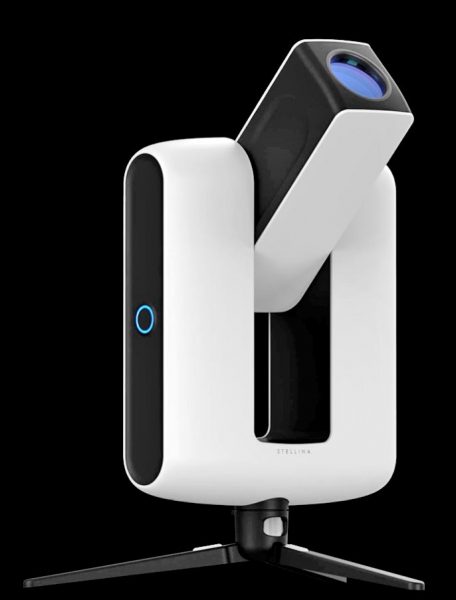The Stellina doesn’t look like a typical telescope. Instead of a long tube, Stellina is a 19″ x 15″ x 4.7″, 15lb block that opens into an ED doublet refractor with an 80mm aperture, f/5 focal ratio, and 400mm focal length sitting atop an alt-azimuth mount. Its 6.4MP Sony CMOS image sensor has 3096 x 2080 pixels and a 1° x 0.7° field of view.
The integrated computer can automatically find your target of interest, and the Stellina uses the included derotator to automatically follow the target as the stars rotate for long-exposure astrophotography. It’s powered by a micro-USB 5V 2A AC power supply or by an optional mobile power charger. You can expect up to 10 hours of use with a 20,000mAh external powerbank. It’s controlled by an app on your smartphone or tablet. Vaonis says: “Stellina opens up new ways to collaborate with the scientific community through crowd-sourced science. Exoplanet transits, asteroid occultations, variable star or supernova monitoring: contribute to the research by sharing your data with research scientists. Be more than an observer, be an explorer!”
Because of the compact size and light weight, the Stellina and its included tripod are easily thrown in a backpack to take along on hikes and camping trips. Its IP53 water-resistance rating means it will be safely transported and used in less-than-ideal conditions.
Vaonis is taking pre-orders now at a $500 discount. Pre-order now for $2499, and you can expect delivery in the third quarter of 2018. Learn much more about the Vaonis Stellina telescope and place your pre-order at the Vaonis website.




Gadgeteer Comment Policy - Please read before commenting
When I see a very small scope (80 mm f/5 and without eyepiece) “showing” a small distant galaxy as large as M31 and in high resolution as can only do scopes at least 3 or 4 times larger with high performing CCDs and imaging means, I call that a scam. More, linking a location in the sky to external databases is like searching DSO pictures via Google ! Even a the smallest tablet equipped with a GPS chip can do it if it uses a planetarium appli linked to external databases, see Celestron and other skymap applis. This product has limitations that the manufacturer has deliberately failed to specify.